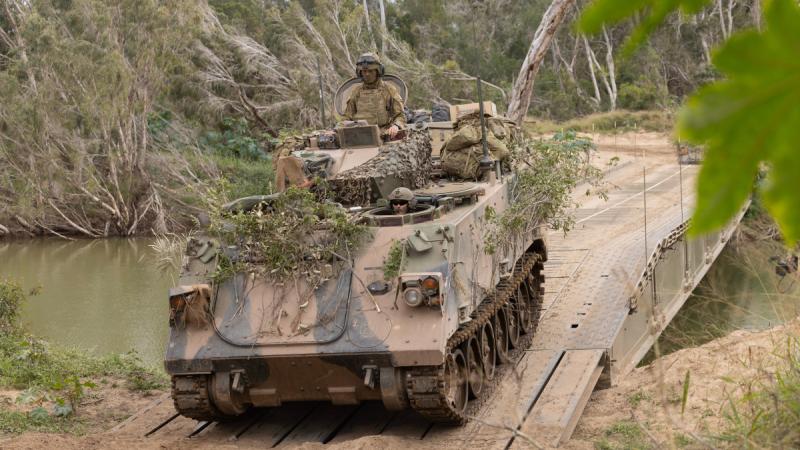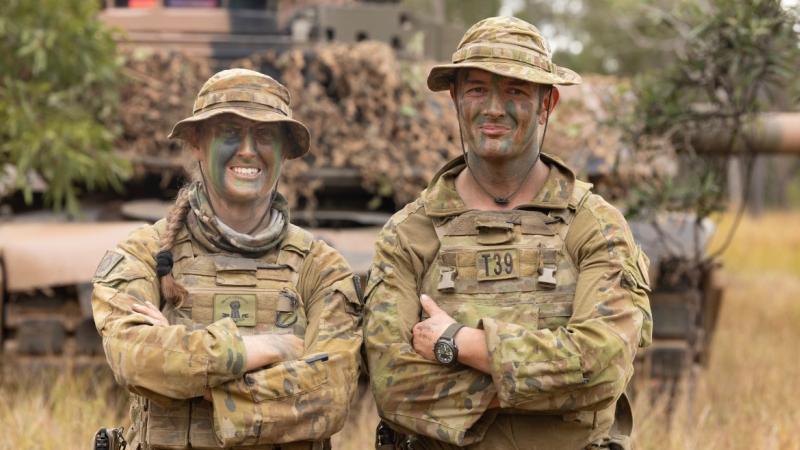1 May 2025
Navy’s largest and most complex antisubmarine exercise in more than a decade, ASWEX, has now concluded off the West Australian coast.
Six warships, four advanced multi-mission MH-60R Seahawks, Royal Australian Air Force and Royal New Zealand Air Force Poseidon P-8 aircraft and a Collins-class submarine were put through their paces during the month-long exercise, uniting with pride and purpose to operate as one lethal and ready weapon.
Yet despite the stunning show of force, Commander Australian Maritime Task Group Captain Darin MacDonald said the secret to the success was not just the impressive platforms taking part, but the hard working and dedicated people of the ADF.
“All of these ships and aircraft, albeit very capable, are just big hunks of metal without an embarked crew,” Captain MacDonald said.
“It is the people in them that truly make them naval warships. The skills, smarts, camaraderie and willing energy they bring to a ship is what makes it a warship.
“Without a doubt, in any ship, any class, any navy, the people are the most important part.”
In command of the largest ASWEX task group in recent years, Captain MacDonald was confident the exercise proved the fleet was focused and ready to meet any challenge head on.
“The task group has done really well. This event has shown that with some investment in time and opportunity, many task group skills can be brought back to a high level, very quickly,” he said.
'They are focused, lethal and ready – practising not just for the sake of training, but for the real challenges that lie ahead.'
More than 1300 Defence Force personnel took part, participating in high-level and intense exercises that ADF assets cannot undertake when operating independently.
“It’s very different operating on your own compared to operating in a task group. The complexity involved in these operations demands a higher level of awareness, communication and cooperation,” Captain MacDonald said.
Over the course of ASWEX, Defence personnel carried out a series of demanding activities to sharpen the tip of the nation’s spear, ensuring a high level of maritime mastery.
“That’s everything from helicopter operations and sea-boat operations between ships to transfer personnel or stores, doing officer-of-the-watch manoeuvres, ship handling, station keeping, task group gunnery, air space and water space coordination and maritime joint fires,” Captain MacDonald said.
“These activities give us the opportunity to rehearse and focus on some of those cooperative skill sets.”
HMAS Hobart joined the task group straight from a three-month regional presence deployment, with Commanding Officer Commander Alisha Withers beaming with pride at the destroyer’s performance returning from an independent mission into task group operations.
“Our ability to coordinate and communicate effectively between units within the task group has directly led to better outcomes, enhancing our overall operational readiness,” Commander Withers said.
“I’m incredibly proud of the way the team has come together, pushing each other to new heights. They are focused, lethal and ready – practising not just for the sake of training, but for the real challenges that lie ahead.”
'Without a doubt, in any ship, any class, any navy, the people are the most important part.'
Also involved was HMAS Arunta, with Commanding Officer Commander David Clarkson enjoying the opportunity for his ship to integrate with a large concentration of the fleet.
“The entire crew was exposed to both the benefits and challenges of life in a task group. For many in the operations teams, this has been their first exposure to high-end events, particularly with a live submarine. Arunta has certainly grown as a ship as a result,” Commander Clarkson said.
Captain MacDonald said having different platforms engaged together enhanced the lethality of the entire Navy.
“There’s a lot of symmetry that has been built into our fleet. Our Anzac-class frigates are a great complement to our destroyers – their systems and sensors actually complement each other really well,” he said.
“Together they provide a really potent package for air, surface and underwater warfare.”
Despite the immense complexity and skill required to operate a large fleet, the intent overall is surprisingly simple.
“The reason why we do this is to assure the Australian people that when ‘the rubber hits the road’ they have a world-class fleet,” Captain MacDonald said.


